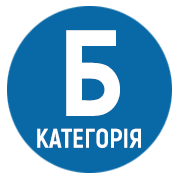CONTENT STRATEGIES OF TRANSLATORS’ TRAINING IN COLLEGES
DOI:
https://doi.org/10.25128/2415-3605.23.1.29Keywords:
translators’ training, colleges, strategies, educational program, syllabus, Content and Language Integrated LearningAbstract
Translators training programs have been or are going to be introduced in some colleges at the level of professional junior bachelor, which can be explained by the increased demand for such specialists in different fields. The article studies the case of Viacheslav Chornovil Halytskyi Professional College which was among the first institutions that developed and introduced the professional junior bachelor program of translator training. The article identifies the peculiarities of professional translator training in colleges, grounds the most effective strategies of educational program and syllabus design; determines effective methods of professional translator training in colleges. Three different design strategies are usually determined in modern literature – forward design, central design, and backward design. Forward design means developing a program/curriculum starting with content, then moving to process, and then to outcomes. Central design focuses first on the process and classroom methodology and then deals with content and outcomes. Backward design starts from outcomes and then determines content and process. The analysis of professional translator training in colleges enabled the conclusions that backward design seems to be the most appropriate for education program development; forward and backward designs can be recommended for syllabus development; Content and Language Integrated Learning with reasonable use of authentic scenarios, activities and immersion in professional situations proved its effectiveness.
References
Стандарт вищої освіти України: перший (бакалаврський) рівень, галузь знань 03 Гуманітарні науки, спеціальність 035 «Філологія». 2019. 19 с.
Brown H. D. Principles of Language Learning and Teaching. Prentice-Hall, 1980. 276 p.
Byram M., Nicols A., Stevens D. Developing intercultural competence Developing Intercultural Competence in Practice. Multilingual Matters. 2001. 296 p.
Clark J. L. Curriculum Renewal in School Foreign Language Learning. Oxford: Oxford University Press. 1987. 264 p.
CLIL in Foreign Language Education: e-textbook for foreign language teachers / Silvia Pokrivčáková et al. 2015. 282 p.
Coyle D. Content and Language Integrated Learning: Towards a Connected Research Agenda for CLIL Pedagogies. International Journal of Bilingual Education and Bilingualism. 2007. 10:5. P. 543–562.
Coyle D., Hood Ph., Marsh D. CLIL: Content and Language Integrated Learning. Cambridge University Press. 2010. 184 p.
Eurydice Report. Content and Language Integrated Learning (CLIL) at School in Europe. Brussels: Eurydice European Unit. 2006. 78 p.
Lantolf J. P. Sociocultural Theory and Second Language Learning. Oxford: Oxford University Press. 2000. 296 p.
Richards J. C. Curriculum Approaches in Language Teaching: Forward, Central and Backward Design. RELC Journal. 2013. 44 (1). P. 5–33.
Wiggins G., McTighe J. Understanding by Design: A Framework for Effecting Curricular Development and Assessment. Alexandria, VA. Association for Supervision and Curriculum Development. 2005. 2nd ed. 370 p.
Winwood B., Purvis A. How to write learning outcomes. Sheffield Hallam University. 2015. 18 p.






